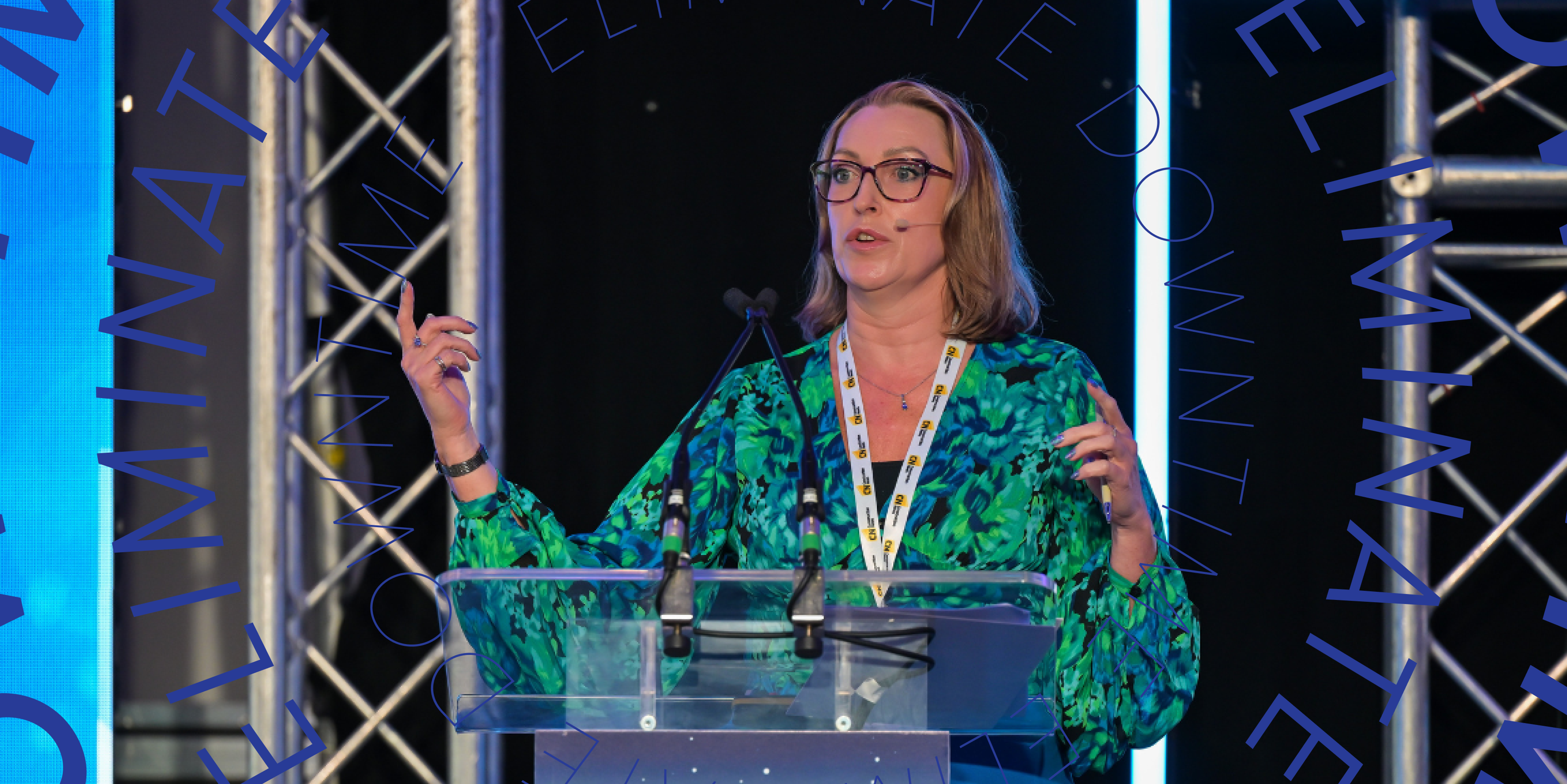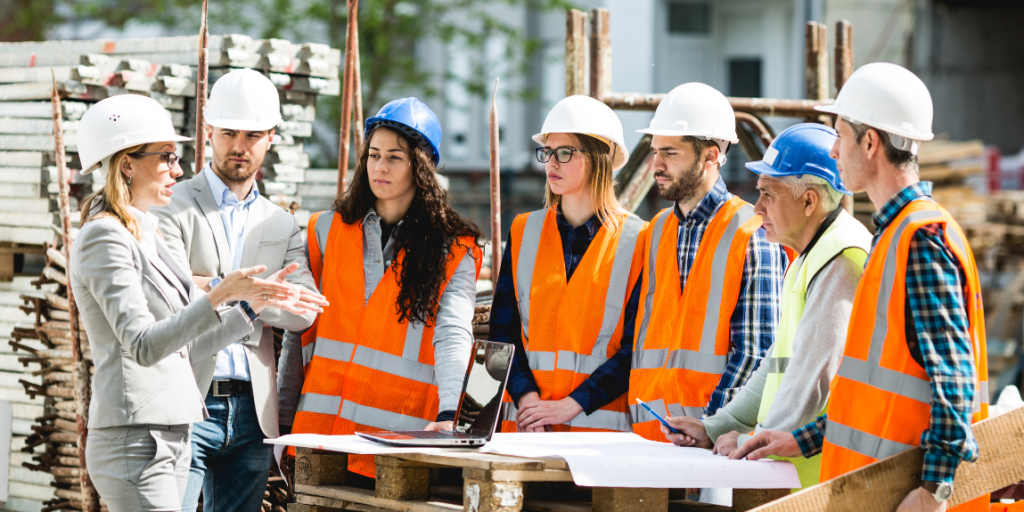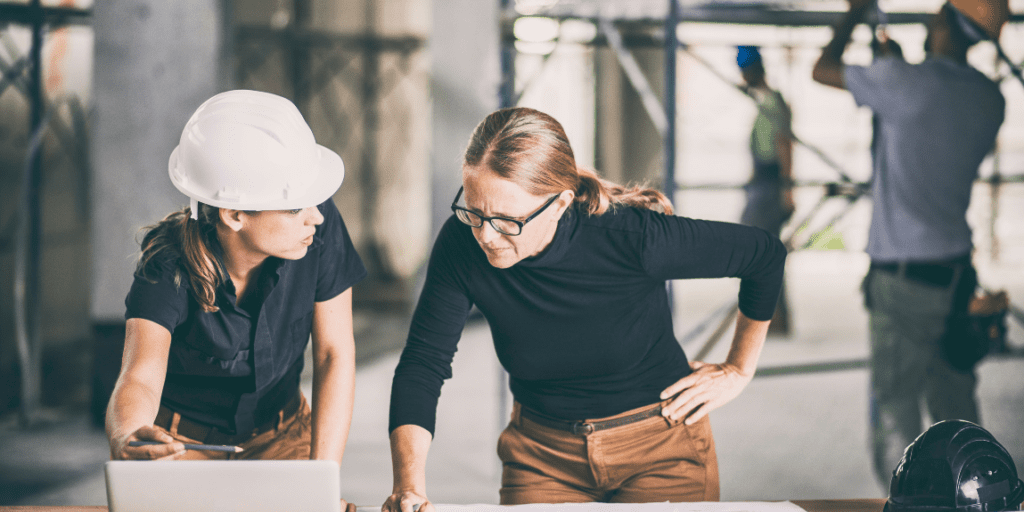

There are not many people whose career has encompassed a bit of Henry VIII, the meaner streets of southeast London, and flying in specialists from Malaysia to undertake woodwork carvings on the doors of a Mosque that also required the services of a Turkish calligrapher to provide passages from the Quran for the internal dome.
But quantum expert Faye Allen has done all that and more in a career spanning over 30 years.
And almost by default, she’s become an ambassador for women in construction both as a trailblazer, and as a key mover and shaker in making the industry more inclusive. She is, for example, a regular on the school circuit speaking to young people who might be interested in pursuing a career in one of the Science, Technology, Engineering and Mathematic (STEM) fields and passionately advocates for construction as a real option for young people and particularly women who often veer away from STEM careers.
But it might have been all so different. When she took her first tentative steps onto a jobsite aged just 18 in southeast London, the culture was so hostile that, as far as pursuing a career in construction was concerned, it nearly broke her.
“Men didn’t expect to see a woman on site, particularly a young woman,” says Allen. “I literally was the only woman on site — the only other women I used to see when I first started were people that worked in the canteen and in the office typing pool. I wasn’t made particularly welcome.”

Indeed, Allen considered getting out given a work culture that was part fuelled by the ‘Lads Mags’ era that exploded onto the 1990s UK scene and normalized the objectification of women, meaning she would often walk into site offices with pictures of topless women adorning the walls. But there was something about the industry that intrigued her.
“I didn’t really want to go down the full time university route so my father who was an estimator with his own business in construction, basically said you’re not sitting at home and started taking me to jobs he was pricing,” she says. “One of the first was a Tudor building which was apparently used by Henry VIII as a stop-off when he was traveling around the country.
“He gave me a tape measure and a drawing and sent me out to measure the walls,” she says. “I began to see the potential this building had while exploring the plans for its refurbishment and it got me hooked.”
Nevertheless, those early days were tough. And without help from an unexpected quarter, Allen might well have moved on.
‘Men didn’t expect to see a woman on site, particularly a young woman…I wasn’t made particularly welcome.’
“I’m first of all quite determined but I also got lucky with mentors,” she says. “When I was really wondering if I wanted to be in this environment and when I was having real issues with the culture, those mentors helped me get through this and put me on a path to where I am now.”
Those mentors were men. Her father of course, but also an industry veteran in Gary Mumford who not only backed her during that difficult start but instilled in her a confidence that she had all the tools to be a real success in the industry. Indeed, it was his intervention when she took a training role at Try Construction (now Galliford Try) that pushed her towards adding an academic bow to her practical experience with one day-a-week spent swotting up on the finer details of quantity surveying.
“Gary fought my corner and Try paid for me to do my Higher National Certificate Bridge course and then a degree later which worked really well for me because it meant that I was getting practical experience on site all the time,” she says.“So whereas you might get a graduate come out of university and they don’t really know a lot that happens in reality on a job, when you do it the way I did, you got that on-the-job experience as well.”
More importantly, Allen got a fundamental understanding early on of the vital role of what we now label ‘allyship’ as a key tool in changing the work culture. It’s a lesson she’s never forgotten.
“I saw straight away how men could play an active role in making women more comfortable in the work environment,” says Allen. “There are some bad eggs around but actually, as far as most men are concerned, they often simply aren’t aware of the issues that women face.”

In those formative years on the jobsite, those challenges included locating the correct kind of PPE (even a small man’s size swamped her), getting washrooms catering for women and dealing with a general lack of hygiene everywhere. Allen says these issues are considerably less today and PPE now specifically caters for women, including expectant mothers. But while the general standard is much higher, there is still much to do.
“It still is hard being a woman, but it’s easier than it was,” she says.
Indeed, the battle to make conditions better for women has become more subtle and, says Allen, it is here that ‘allied’ men can make a difference. She cites, for example, issues women face in being interrupted as previously researched in 1975 and 2014 as well as Mary Ann Sieghart‘s measured focus on women’s struggle to be taken seriously in ‘The Authority Gap‘.
“Men who genuinely learn about the challenges women face can step in and be allies to women and other diverse groups when these issues occur,” says Allen. “It applies to so many every day examples — even things like a woman having a great idea which is ignored until a man comes in 10 minutes later and presents it as their own. This can be called out and others educated by bold leaders intervening.”
It’s tough, she says, because that can mean going against the consensus and as a man being vulnerable, but her book ‘Building Women’ due for publication this year, details how allyship can improve the culture and tackle well-documented industry issues.
“If the industry works harder to become more inclusive this will go a long way towards addressing some of the serious global labour shortages in the industry in trades and other careers like engineering for example,” she says.
‘I saw straight away how men could play an active role in making women more comfortable in the work environment.’
Not that Allen is shy of calling out bad behavior in the industry as demonstrated when she shone the spotlight on a recent event in the UK that once again revived outdated female construction stereotypes that had more in common with a 1970s ‘comedy’ sketch, but her concern is more for people who are starting out and might not have the confidence to stand up for themselves. And it applies just as much to men as women, she says.
”I think women can be allies to men as well, because when men do step outside of their lane as an ally, they can get a lot of stick,” she says. “They’re the ones that can help work with us to make a difference.”
Allen says we need to change the culture and challenge traditional gender roles, adding men should feel free to do things differently if they want to. For example, exercising their rights to paternity leave and splitting maternity leave to not only help challenge gender norms but also enable women to continue their careers rather than being automatically expected to take on the bulk of the child-rearing role. The onus, she says, is on the industry and society to make it easier for parents to do things differently.
“There’s still stigma if a man takes time off to care for children in the industry and this needs to stop,” she says, citing men who were told they were “putting their feet up” when caring for children.
“You would never say that to a woman and there’s such a disparity in the perception between men and women when they undertake this role,” says Allen. “Both parents should be able to have time with their child and if we made it easier for them to do so and had better options to share maternity leave it would help both to hopefully continue pursuing their respective careers.”

But she remains an optimist that with change to the culture, the industry can foster more inclusivity and increase the numbers of women in the industry. She notes the UK government recently announcing plans for an additional 1.5 million houses by 2030, and while she thinks this is an unrealistic target based on the current skills shortages, the time could not be riper for more women to enter the industry.
“The government has set a stiff target and I’m not sure they’ll get there, but what is not in doubt is that they are going to need more people,” she says. “It means it too has to play its part in making the industry more attractive to people who don’t necessarily fit the traditional stereotype.
‘Make construction more attractive and a better place to work for women and other diverse groups and you will make construction a better place for men too.’
“But it’s not just about attraction, we lose women later in their careers as well, often as a result of the lack of inclusivity in some parts of the industry. I have interviewed over 1,300 women in the last few years, many have been pushed out after becoming a parent or forced out for wanting flexible working arrangements,” she says. “We need to stop this behavior if we are to have a thriving industry that welcomes women and other diverse groups.”
And what would she say today if she was stood in front of a group of teenage girls on the school circuit?
“You could work in skilled trades, like plumbers, bricklayers or plasterers, or be involved in design as, architects, mechanical and electrical engineers, structural engineers or geotechnical experts,” she says. “Then you’ve got other roles like quantity surveyors, building surveyors, project managers, planners and IT specialists to mention but a few, all offering huge opportunities career-wise.
“There’s also a very simple truth here,” she adds. “Make construction more attractive and a better place to work for women and other diverse groups and you will make construction a better place for men too.
“The UK construction industry loses two men every working day to suicide so improving the culture and tackling the work environment, which often has long hours in poor conditions is really important and will have a positive impact,” she says. “I’m convinced encouraging and more importantly supporting and retaining women and other diverse groups in the industry will improve the culture and working conditions for all and that will benefit everyone.
“It’s up to all of us to make things better.”
The Interview is our forum for leading industry personalities to discuss the big issues facing construction, what the solutions could be, and what needs to be done to make it a force for progress. Read more here.

